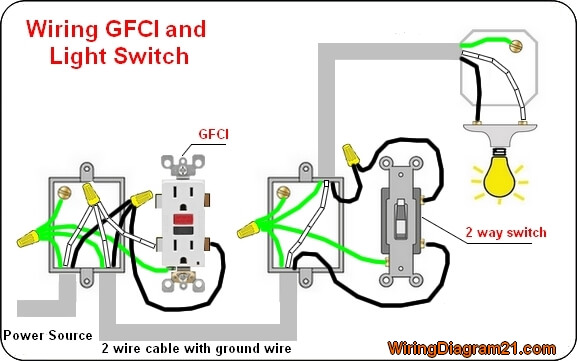
That annoying snap and the sudden darkness—a tripped electrical outlet is a common household frustration. But beyond the inconvenience, a repeatedly tripping plug can signal a serious underlying electrical issue. This guide dives deep into the reasons why your electrical plug might be tripping and offers practical solutions to restore power and ensure safety.
Experiencing a tripped circuit breaker or a tripped GFCI (Ground Fault Circuit Interrupter) outlet is more than just a nuisance. It's a safety mechanism designed to protect your home from electrical hazards. When the flow of electricity exceeds a safe limit, the circuit breaker trips, cutting off power to prevent overheating, fires, and electrical shocks. Understanding the root cause is crucial for addressing the problem effectively.
While the modern circuit breaker system is a relatively recent development, the concept of protecting electrical circuits dates back to the late 19th century. Early forms of circuit protection were rudimentary, but the need for a safety mechanism became increasingly apparent with the widespread adoption of electricity. Today's circuit breakers and GFCI outlets are sophisticated devices that offer reliable protection against electrical faults.
The importance of addressing a tripping electrical plug cannot be overstated. Ignoring the issue can lead to damaged appliances, electrical fires, and even personal injury. A frequently tripping outlet indicates an imbalance in the electrical circuit, which could stem from a variety of issues ranging from overloaded circuits to faulty wiring or appliances.
Several factors contribute to a tripping electrical plug. An overloaded circuit, where too many appliances are drawing power from a single outlet or circuit, is a frequent culprit. Faulty appliances, with damaged wiring or internal shorts, can also cause the circuit to trip. Other potential causes include ground faults, where electricity takes an unintended path to the ground, and arc faults, which are dangerous electrical discharges that can ignite flammable materials.
A ground fault occurs when electricity flows through an unintended path, such as through a person or a water source. A GFCI outlet is specifically designed to detect these ground faults and quickly trip the circuit, preventing potentially fatal shocks. An arc fault, on the other hand, is a high-power discharge of electricity that can create intense heat and ignite surrounding materials. Arc fault circuit interrupters (AFCIs) are designed to protect against these dangerous electrical discharges.
Addressing a tripping plug involves identifying the underlying cause and taking appropriate action. If the circuit is overloaded, try unplugging some appliances and redistributing the load across different circuits. If a faulty appliance is suspected, unplug it immediately and have it repaired or replaced. For more complex issues, such as faulty wiring or ground faults, it's crucial to consult a qualified electrician.
Advantages and Disadvantages of Circuit Breakers
| Advantages | Disadvantages |
|---|---|
| Protects against overloads and short circuits | Can be inconvenient when tripped frequently |
| Prevents electrical fires | Doesn't always indicate the specific problem |
| Easy to reset | Requires investigation to identify the root cause |
Frequently Asked Questions:
1. Why does my outlet trip when I plug in a specific appliance? This could indicate a faulty appliance. Try the appliance in a different outlet. If it trips that outlet as well, the appliance likely needs repair or replacement.
2. Is it safe to reset a tripped breaker multiple times? If the breaker trips immediately after resetting, it indicates a persistent problem. Do not continue resetting it; instead, consult an electrician.
3. Can I replace a circuit breaker myself? While possible, it's generally recommended to hire a qualified electrician for electrical work to ensure safety and proper installation.
4. What should I do if I suspect a ground fault? Do not touch any electrical appliances or outlets. Contact a qualified electrician immediately.
5. How can I prevent overloaded circuits? Distribute electrical loads evenly across different circuits and avoid plugging too many high-power appliances into a single outlet.
6. Are GFCI outlets required in all rooms? GFCI outlets are typically required in bathrooms, kitchens, and outdoor areas.
7. What is the difference between a GFCI and an AFCI? GFCIs protect against ground faults, while AFCIs protect against arc faults.
8. How often should I have my electrical system inspected? It's recommended to have a professional electrical inspection every few years.
Tips and Tricks: Label your circuit breakers to easily identify which outlets they control. Use power strips with surge protection to safeguard your electronics. Avoid using extension cords as permanent wiring solutions.
In conclusion, understanding why your electrical plug keeps tripping is essential for maintaining a safe and functional home. While occasional trips are normal, frequent tripping indicates an underlying issue that requires attention. By identifying the root cause, whether it's an overloaded circuit, a faulty appliance, or a more serious electrical problem, you can take the necessary steps to resolve the issue and prevent potential hazards. Don't ignore a tripping outlet – addressing the problem promptly ensures the safety of your home and loved ones. If you're unsure about any electrical work, always consult a qualified electrician. They can diagnose the problem accurately and provide safe and effective solutions. Taking proactive steps to address electrical issues protects your home, your appliances, and most importantly, your family. Don't wait until a small problem becomes a major disaster – address tripping outlets promptly and effectively.
Unlock creativity with printable lilac purple butterfly templates
Red aesthetic collage wallpaper love obsession or expression
Unlocking mexican law unam law school curriculum explored













